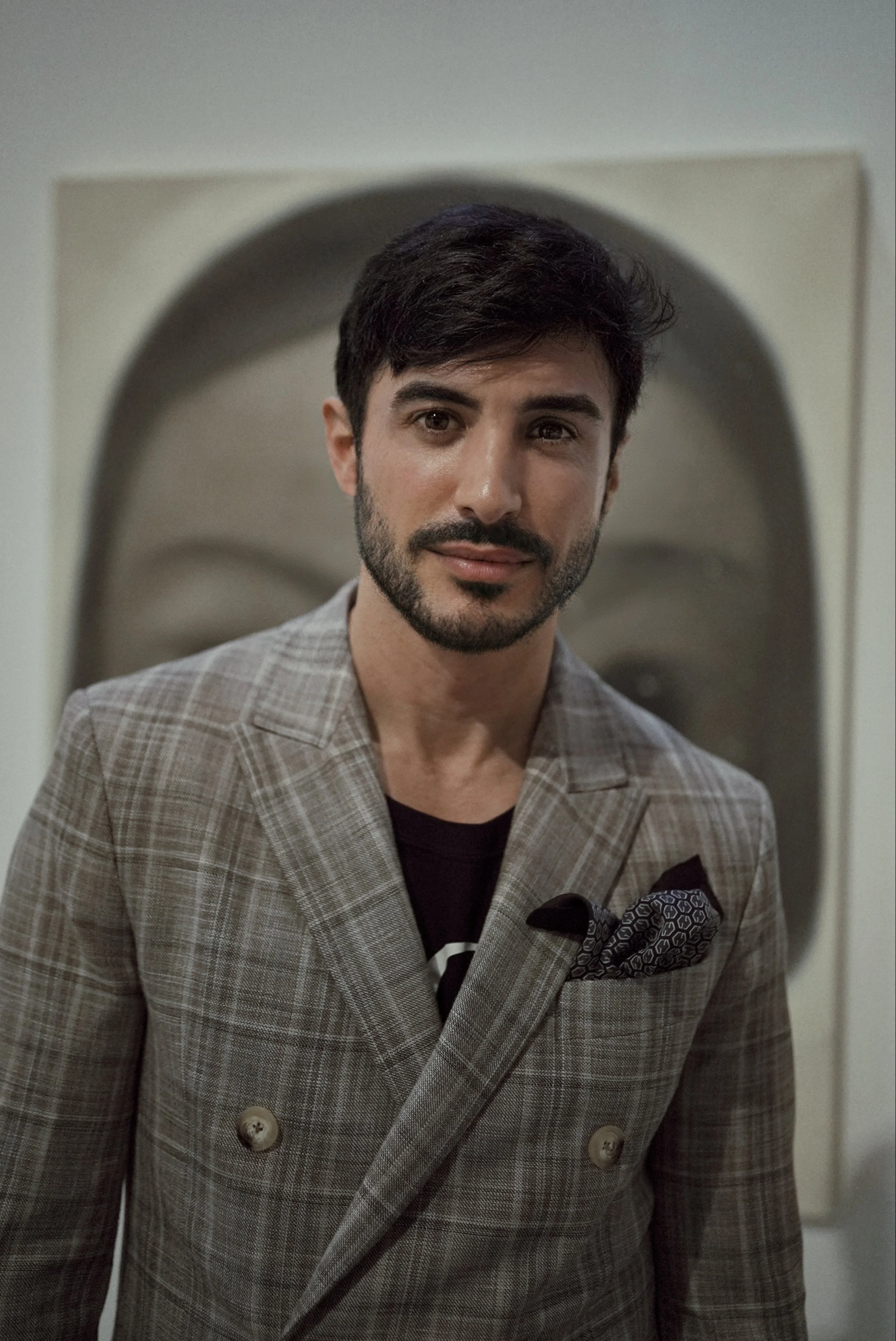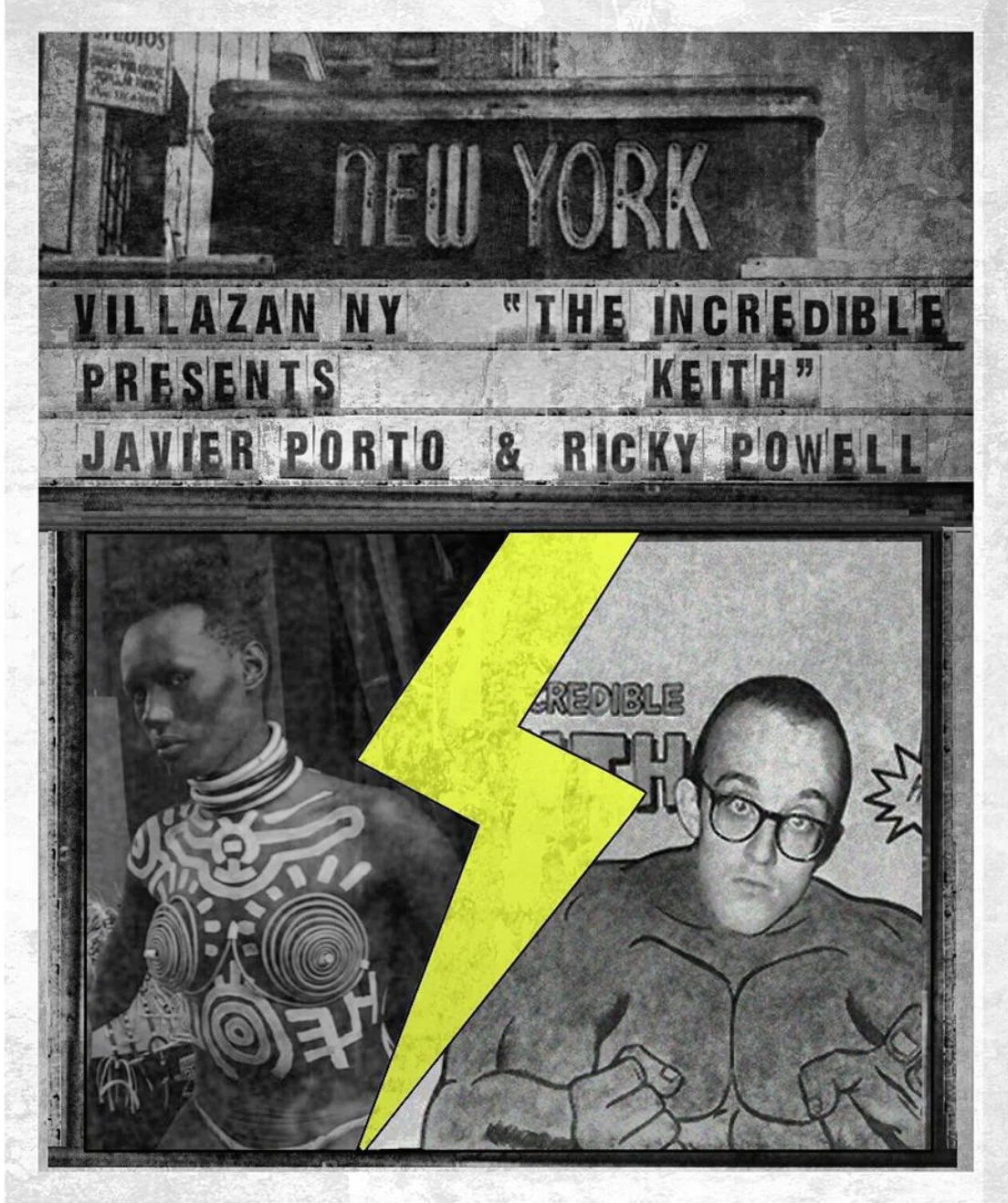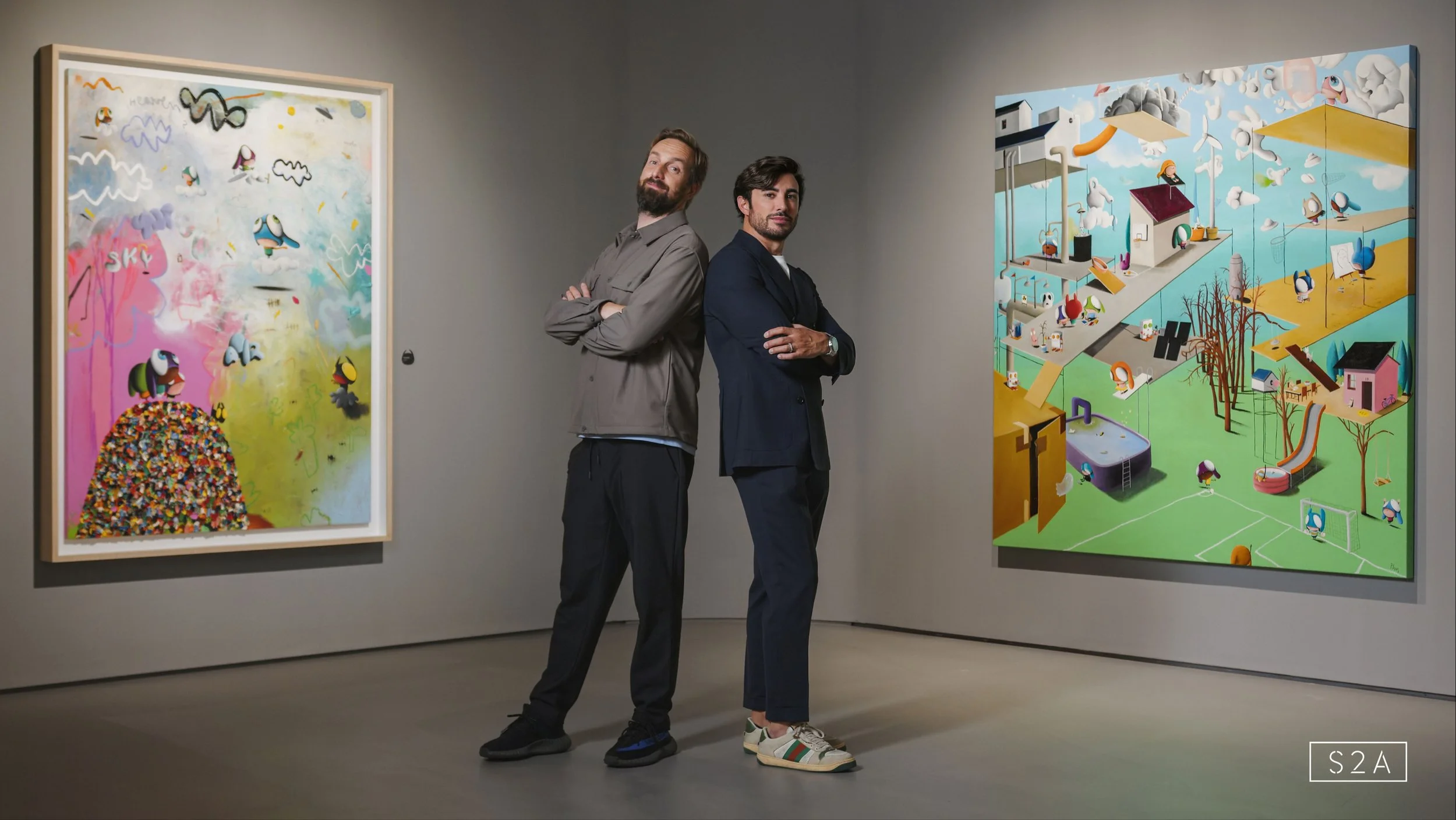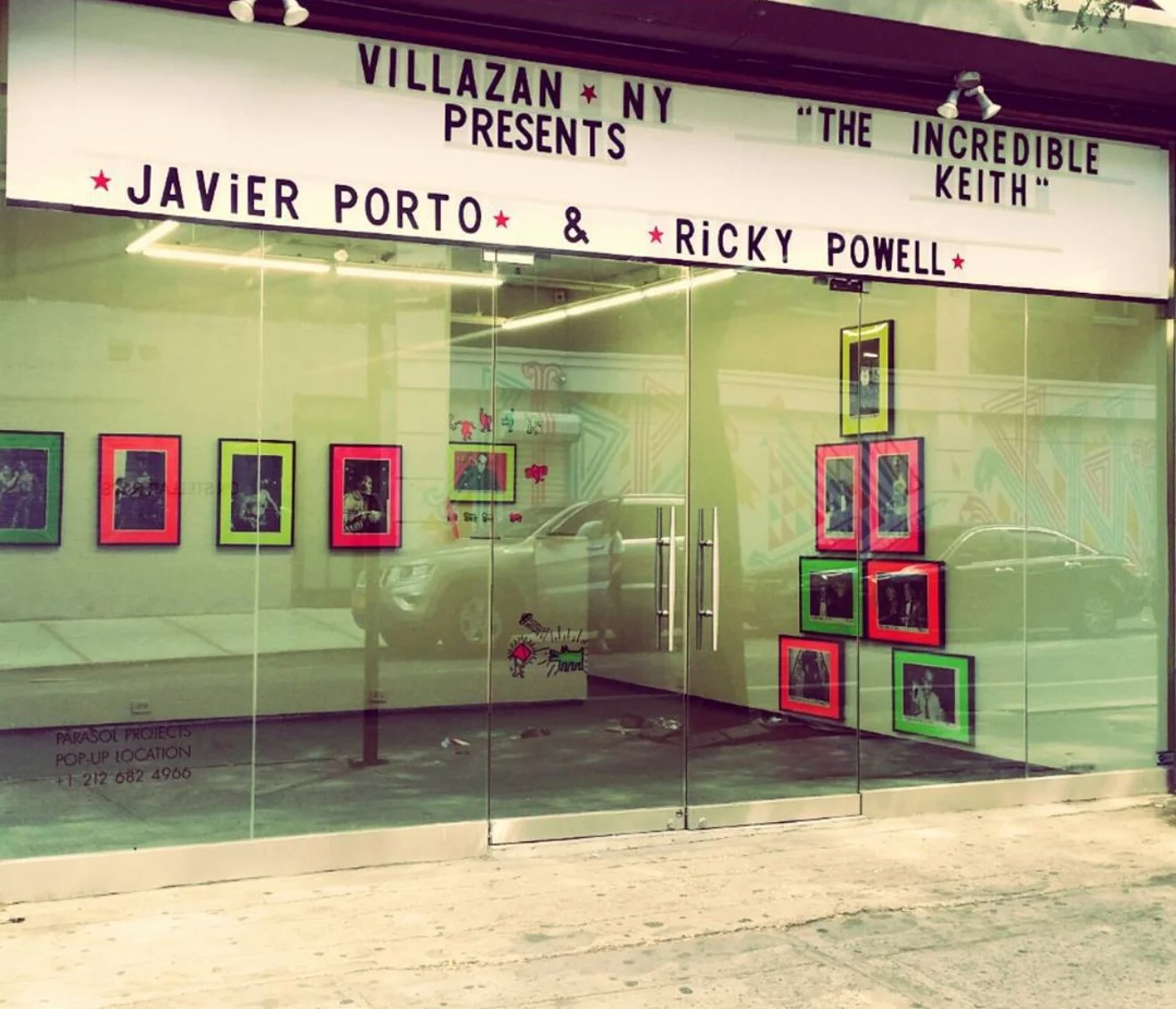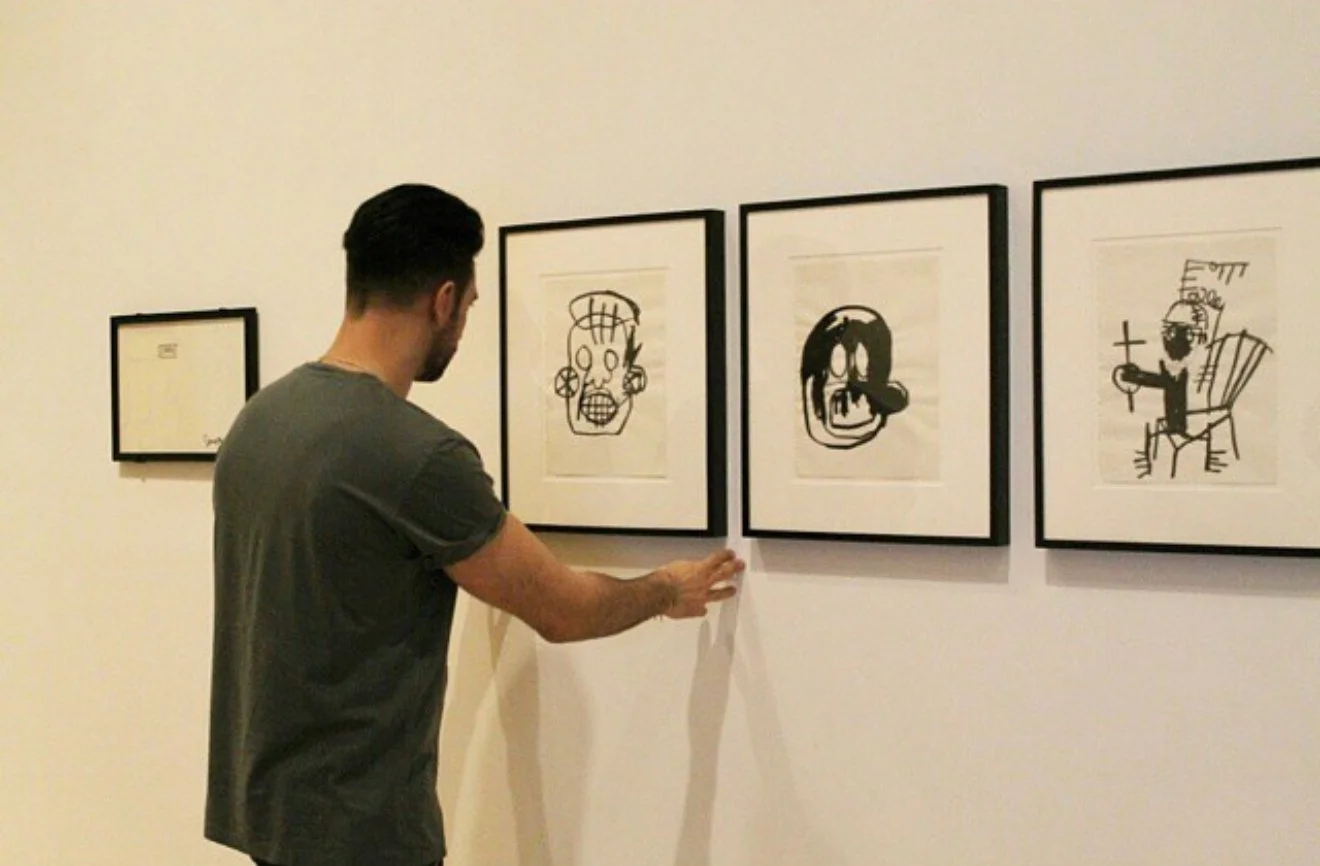A Decade in Review: Ten Years of VILLAZAN with Pablo Villazán
In just over a decade, Pablo Villazán has established himself as one of the most influential figures in the contemporary art world. Often referred to as "the Midas of emerging art," Villazán has earned international recognition for his ability to discover, support, and elevate new voices on the global stage. The gallerist is known for his role in elevating artists through institutional partnerships and museum exhibitions.
As the founder of VILLAZAN, with locations in New York, Madrid, and a satellite office in Hong Kong, his vision has shaped not only the careers of countless artists but also the direction of contemporary visual culture itself.
Pablo Villazán is also the driving force behind the Cuteism movement, which reclaims visual innocence and emotional connection as valid and powerful tools in contemporary art. His curatorial practice is defined by intuition, boldness, and a deep belief in the transformative power of aesthetics.
In this conversation, we look back at the last ten years of VILLAZAN’s evolution, explore the dynamics of artistic discovery, and get a glimpse into what’s next for one of the art world’s most dynamic and boundary-pushing gallerists.
1. Looking back to the early days, what motivated you to open your first gallery in New York's Lower East Side in 2015, and what vision did you have at the time?
Before opening the gallery, my life was very different. I came from the legal world and was working as a practicing lawyer. But I always had a strong interest in culture and the arts. When I moved to New York to pursue an MBA, I wasn’t yet thinking of becoming a gallerist. That decision came gradually, shaped by the energy of the city and the freedom it gave me to imagine a different path.
The gallery actually started as my final project during the MBA. It was an academic idea at first, but as soon as I started working on it, I knew it was much more than that. The turning point was in September 2015, when I opened my first exhibition at the gallery in the Lower East Side. It was titled “The Incredible Keith”, and it focused on the life and legacy of Keith Haring through photography and documentation. Alongside Haring, artists like Robert Mapplethorpe, Jean-Michel Basquiat, and Andy Warhol also played a significant role in shaping my sensibility and connection to art. Without knowing them, of course, they gave me the strength and inspiration to pursue this new direction in my life. That show marked a before and after, both personally and professionally.
From the very beginning, my vision was to create a space that felt emotionally open, dynamic, and committed to art with real human resonance. I wanted to build something that challenged the conventional gallery model, something closer to artists and to people. That core idea is still what drives me today.
Pablo Villazán at Roby Dwi Antono exhibition, New York, 2020
2. How has your background in law and business shaped the way you run your galleries today?
My background in law and business has been instrumental in shaping how I approach the day-to-day operations of the gallery, as well as the long-term strategy. Understanding contracts, negotiations, and the importance of clear structure and accountability has allowed me to build trust with artists, collectors, and institutions.
The legal training taught me discipline, attention to detail, and how to think critically and anticipate problems. The business education, especially during my MBA, gave me the tools to understand how to scale a project, manage a team, and develop a sustainable model for growth. But more than anything, both backgrounds gave me the confidence to create a gallery that was not only passionate about art but also professionally structured and internationally positioned.
I think one of the key challenges in the art world is finding the right balance between creative freedom and professional rigor. My experience outside the art world has helped me bridge that gap in a way that supports both artists and the long-term vision of the gallery.
Promotional flyer, “The Incredible Keith” exhibition, New York, 2015
3. VILLAZAN now has a global presence, with spaces in New York and Madrid, and an office in Hong Kong. What have been some of the key challenges and insights in adapting your curatorial voice across such different cultural contexts?
Expanding VILLAZAN internationally has been a natural evolution of our vision to create a truly global platform for artists. Each location has brought unique perspectives and challenges, but also invaluable opportunities to engage with different audiences and cultural ecosystems. Having a physical presence in both New York and Madrid allows us to operate between two vibrant art capitals, each with its own tempo and artistic discourse. New York offers unmatched energy, diversity, and a spirit of experimentation that continues to shape our programming. Madrid, with its rich cultural heritage and increasingly dynamic contemporary scene, gives us the space to delve into more intimate curatorial narratives.
Our office in Hong Kong has also played a vital role, serving as a gateway for understanding and connecting with the Asian art world. While we don’t operate a permanent exhibition space there, it has allowed us to build relationships, support our artists in the region, and explore collaborations that might otherwise have been out of reach.
One of the greatest insights throughout this process has been the importance of remaining flexible and deeply engaged with local context. Rather than imposing a fixed model, we try to remain in constant dialogue with the artists, collectors, curators, and communities we work with. What ties everything together is our consistent commitment to emotional resonance, visual impact, and a curatorial approach that places the artist’s voice at the center. Each new location is not about replicating a format, but about translating our values into a new language, shaped by its cultural environment.
Installation view of "DYNAMIC VISIONS: THE ART OF PERCEPTION AND SPACE", at VILLAZAN Madrid, 2024
4. You're widely credited with discovering and promoting emerging artists who have gone on to become international names. What do you look for when deciding to work with an artist?
When I decide to work with an artist, I always look for authenticity first. I’m drawn to artists who have a strong personal voice, something that feels honest, emotionally resonant, and visually distinct. It’s not only about technical skill or formal innovation, although those are important. What matters most to me is that the work carries a sense of urgency or necessity, as if the artist couldn’t not make it. That kind of work always leaves a mark.
I also value artists who are willing to take risks, who aren’t afraid to experiment and evolve over time. I try to build long-term relationships with artists, so I’m always thinking beyond a single show or a specific moment in the market. I ask myself: is this someone I can grow with?
Lastly, I listen to my instincts. Some of the most successful relationships I’ve had began from a very intuitive place. When I first encountered the work of Edgar Plans, for example, I didn’t hesitate. I knew right away that his world was special and needed to be shared. That kind of conviction is what I look for. It’s rare, but when it happens, I trust it completely.
Edgar Plans exhibition curated by Pablo Villazán, S2A Museum, Seoul, 2023
5. Let’s talk about Cuteism. How did this movement emerge, and why do you think it resonates so strongly in today's cultural landscape?
Cuteism emerged organically through the work of various artists who began exploring tenderness, innocence, and emotion as visual languages with depth and symbolic weight. For many years, "cute" was dismissed in the contemporary art world as something superficial or lacking seriousness. I saw in it something powerful and radical. These artists weren't afraid of emotion. They embraced it, and that made their work feel honest, direct, and profoundly human.
Villazán was the first gallery to truly champion Cuteism. We developed the movement from New York, exhibiting a wide range of international artists, many of them Korean, who had been working with this visual language for some time. We gave these artists a platform to reach the American market, which helped push the movement into the international spotlight.
I believe Cuteism resonates today because the world is emotionally saturated. People are overwhelmed by violence, uncertainty, and digital noise. Cuteism offers a space for emotional connection and empathy. It’s not escapist. On the contrary, behind the tenderness there is often critique, reflection, and cultural commentary.
That said, the movement has evolved. It is no longer as dominant as it once was. New visual directions have taken the lead. Even the artists associated with Cuteism have transitioned into new aesthetic languages. In some cases, their work is now less overtly tender, but it continues to carry deep emotional and symbolic meaning. Cuteism hasn’t disappeared. It has matured and become more complex, adapting to the shifts in our cultural and emotional realities.
Installation view of “It Was A Very Good Year, Kind Of”, Stickymonger show at VILLAZAN Madrid, 2022
6. As a gallerist, curator, and collector, how do you navigate the line between personal taste and market potential when selecting artists and artworks?
My personal taste is deeply connected to the kind of art I enjoy working with and the artists we represent at the gallery. There was a moment in the past when the gallery’s program didn’t entirely reflect my personal preferences and leaned more toward market trends. But over time, I’ve worked very intentionally to align our artist roster with both my personal sensibility and a strong sense of artistic value.
Our program has evolved significantly, just as my own understanding and taste in art have matured. I believe it’s essential to remain honest and committed to what we present, both to collectors and to the public. Today, I feel proud that our exhibitions reflect this evolution and offer a meaningful, coherent vision.
One of my main goals is to bring truly international artistic experiences to local audiences. Many of the artists we present are ones you would usually only see in major museum shows abroad. I want people to be able to engage with that level of work in their own city, without needing to travel across the world to do so.
Installation view of "SHADOWS OF REPETITION: A Collective Exploration of Minimalism, Reflection, and Pattern”, at VILLAZAN Madrid, 2025
7. VILLAZAN is also known for supporting artists beyond the exhibition space, with publications, performances, and institutional collaborations. Why is this kind of multidimensional support so important to you?
I believe that every element of artistic support, whether exhibitions, publications, and institutional collaborations, is both necessary and complementary. The exhibition is fundamental because it brings the artist’s vision to life and allows the public to engage directly with the work and its meaning. But equally important is documenting that experience in a tangible form, such as a book, catalogue, or publication. Not everyone can afford to acquire a work of art, but art is meant to be shared and appreciated widely. Having a publication allows people to revisit and reflect on what they felt when encountering the work, even long after the exhibition ends.
Collaborations with institutions, on the other hand, are essential for elevating an artist’s career. Museums and cultural foundations add an important layer of recognition and provide platforms where the artist’s work can be seen in new formats and by diverse audiences. These opportunities not only broaden the visibility of the work but also contribute to the artist’s creative evolution. I see all of these aspects as deeply interconnected and vital to our role as a gallery.
Pablo Villazán with Ana Barriga at the Forbes Art event organized by Gabriel Suárez, Madrid, 2025
8. What role do you believe commercial galleries should play in today’s global art ecosystem, especially when working with emerging voices?
Commercial galleries have a huge responsibility today. We are not just spaces for sales; we are platforms for discovery, visibility, and long-term support. Especially when it comes to emerging artists, galleries must identify talent early, nurture their development, and introduce them to broader audiences including institutions, collectors, and the public.
At VILLAZAN, we see ourselves as advocates for the artists we work with. Our goal is to help them grow professionally, ensure their work reaches international audiences, and provide a sustainable foundation for their careers. This means investing time, resources, and belief in their vision even before the market fully responds. I believe this is one of the most important contributions galleries can make to the future of contemporary art.
Installation view of “ARAKI POLAROIDS: A Raw Vision of Desire and Impermanence”, at VILLAZAN Project Space, Madrid, 2025
9. Your exhibitions often feel bold, emotional, and accessible. Is that intentional? How do you balance critical depth with public engagement?
Yes, absolutely. It’s very intentional. I want the exhibitions at VILLAZAN to be emotionally engaging and accessible without ever compromising their depth or seriousness. I believe that powerful art should be able to speak to everyone, not just to a small group of insiders or academics. That doesn’t mean simplifying the content, but rather communicating in a way that’s honest and direct.
For me, it’s about creating exhibitions that people remember, that provoke thought and feeling, and that resonate on multiple levels. We work hard to present shows that are well-researched and conceptually solid, while also being visually striking and emotionally immersive. I think that’s where the real power of art lies, in its ability to connect with people in a way that’s both intellectual and deeply personal.
Photo of the first exhibition of the gallery, VILLAZAN Gallery, New York, September 2015
10. Looking ahead, what are your hopes and ambitions for the next decade of VILLAZAN?
I want VILLAZAN to continue evolving as a global platform for bold, meaningful, and emotionally resonant art. Over the next decade, my goal is to deepen our presence in key cultural cities, while also strengthening our long-term relationships with artists and institutions. I want to continue discovering and supporting new voices, but also to be a place where mid-career and established artists can take risks and show new sides of their practice.
At the same time, I hope to expand the gallery's engagement with the public. This means more publications, collaborations, educational projects, and ways of connecting with audiences that go beyond traditional exhibition models. I want VILLAZAN to be remembered not only for the quality of the art it shows, but also for the conversations it creates and the experiences it offers.
Pablo Villazán working on the installation of Jean-Michel Basquiat solo exhibition, New York, 2016
11. And finally, what advice would you give to young gallerists and curators trying to break into the art world today?
Be passionate, be curious, and be persistent. The art world can seem difficult to access at first, but relationships and integrity are everything. Surround yourself with artists whose work truly moves you, and build from there. Don't rush to follow trends, stay focus on what feels authentic and meaningful to you.
Also, don’t be afraid to take risks or make mistakes. Some of the best projects come from trying something new and learning along the way. This is a long journey, so stay committed to your values and your vision. The people who last in this field are those who genuinely care about art, about artists, and about creating something that resonates beyond commercial value.

